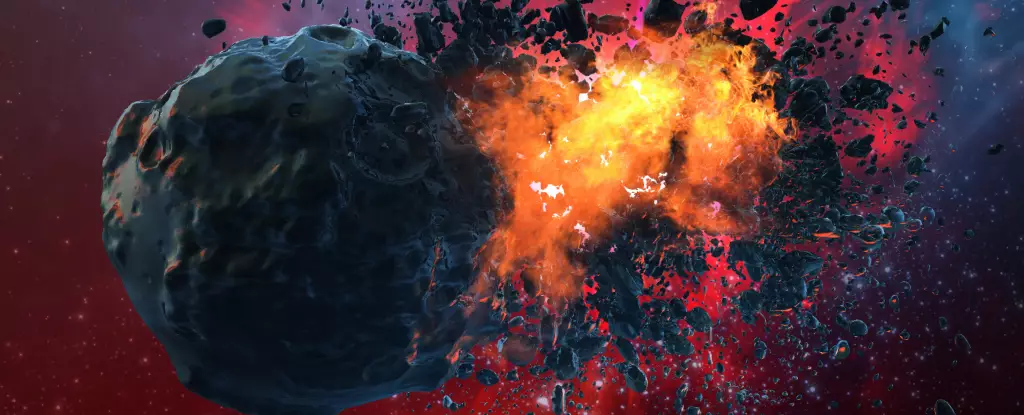As astronomers and space enthusiasts keep a close watch on the cosmos, the recent announcement concerning the asteroid 2024 YR4 has raised both intrigue and concern among scientists and the public alike. The prediction of a 3.1 percent chance of collision with Earth on December 22, 2032, is noteworthy—marking the highest probability related to a massive asteroid in contemporary scientific tracking. However, what emerges from this disclosure is a profound understanding of not just the threat but also humanity’s potential response mechanisms to such celestial challenges.
The Nature of the Threat
Asteroids, by their very nature, are remnants of the early solar system, composed of metals and rocky materials. These celestial bodies float through space, occasionally veering off course due to gravitational interactions or collisions. While large-scale impacts are rare, they carry catastrophic consequences. The current calculations highlight a relatively small chance of impact, yet this should not lull the global community into complacency. Rather, it emphasizes the critical need for a robust planetary defense strategy.
The recent figures from NASA concerning 2024 YR4 have instigated a discussion about the mechanisms in place to tackle potential asteroid threats. Richard Moissl, head of the European Space Agency’s planetary defence unit, advises not to panic. The broader aim here, however, is substantial: developing feasibility plans that could safeguard human life and infrastructure.
Current Strategies for Planetary Defense
Humanity is not devoid of plans for countering potential asteroid threats. Notably, the successful Double Asteroid Redirection Test (DART) conducted by NASA serves as a pioneering example of active asteroid deflection. The DART mission involved deliberately crashing a spacecraft into an asteroid—Dimorphos—which modified its orbital path and established an effective method for future endeavors.
Moreover, other strategies highlight a range of approaches from direct impact to non-invasive maneuvers. One theoretical method known as the gravity tractor approach involves maneuvering a sizable spacecraft near the asteroid, leveraging its gravitational pull to subtly shift the object’s trajectory without any physical contact. This non-destructive technique provides a less aggressive alternative to more dramatic measures.
In a similar vein, researchers ponder the possibility of employing ion beam propulsion. By placing a spacecraft close to the asteroid, and projecting a steady stream of ions, it may be possible to nudge the asteroid off its path through focused thrusts. Such technology emphasizes the innovative spirit within the field of planetary defense.
While the moonlight of ingenuity shines bright in planetary defense mechanisms, the specter of nuclear intervention looms ominously. The concept of detonating a nuclear device near an asteroid has emerged in scientific discourse. Although heavily laden with ethical and political ramifications, this strategy is considered a last-resort remedy for asteroids of considerable size that pose an imminent threat.
Historical references, like the movie “Armageddon,” can overshadow the scientific rigor behind these proposals. The reality is that detonating a nuclear weapon in proximity to an asteroid could potentially create more harm than good by scattering hazardous fragments towards Earth. While experiments indicate that x-rays produced from a nuclear explosion might vaporize part of an asteroid’s surface, this method remains controversial and fraught with risk.
Sharply contrasting these severe methods are ideas involving the use of laser technology to vaporize parts of an asteroid, providing a gentler nudge away from an Earth trajectory. Although laser systems exhibit promise, their status as a ‘top technique’ remains debatable among experts.
Navigating this celestial threat necessitates teamwork on a global scale. Experts posit that the manner in which the planet moves collectively influences the effectiveness of any defense strategy. While specific strategies will be initiated by international space agencies, the ultimate decisions may depend on algorithms devised by world leaders—reflecting political will and coalescence in the face of an existential risk.
Furthermore, should the asteroid endeavor to breach Earth’s atmosphere, having precise projections regarding impact zones could pave the way for timely evacuations, thus minimizing loss of life. This proactive preventative strategy illustrates that no matter the nature of the threat, preparedness is vital. As Moissl observes, having seven and a half years for preparation, anchored in knowledge, fosters a buffer against uncertainty.
In sum, while the chance of asteroid impacts remains minuscule, the discussions surrounding these instances are crucial. They provide a lens not only into scientific preparedness but also into the broader capabilities of humanity to unite against potential threats from the universe. By harnessing innovation, collaboration, and strategic foresight, we can ensure that when the stakes are high, we are both ready and capable.

